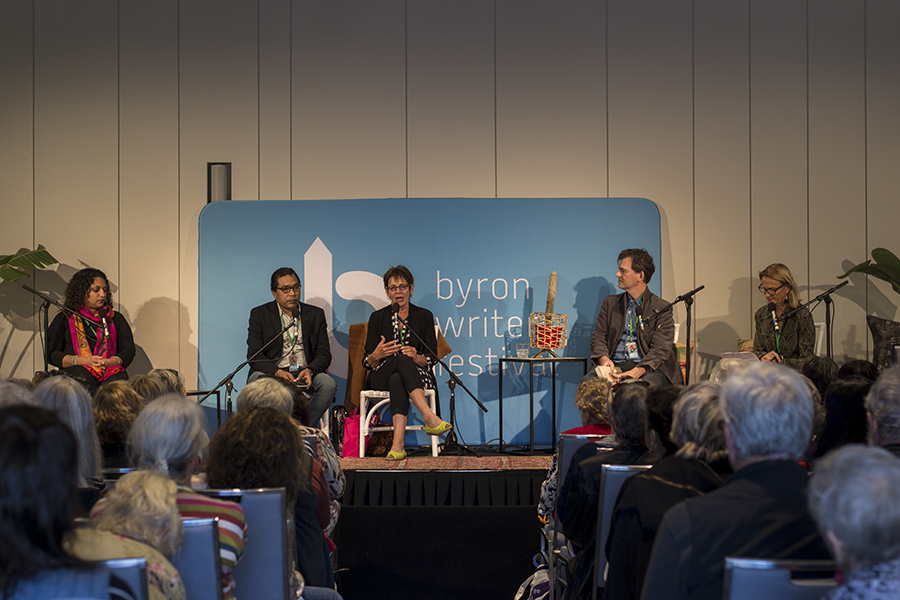Making art about country lends complexity to our stories of place

It is a quintessential part of the human experience to seek understanding from other people, and the panel Making Art About Country brought together those who use a combination of visual arts and writing to explore and express the connection they feel to physical space.
Session chair Jill Eddington guided us through an engaging exploration of three very different narratives. Eddington is the current CEO of University of Queensland Press.
Writer and visual art artist Kim Mahood uses many mediums to create her work. Mahood recently released her second memoir, Position Doubtful, which explores the relationship between people and the Tanami desert.
Mahood does not distinguish between her visual art and her writing. She says that they both do different things, but that ‘art-making bypasses the intellectual’. This is because art for her is largely about the process rather than the result. She sought to create connections to a remote place in those who would likely never see it.
Joshua Yeldham’s book Surrender started as a ‘love letter’ of sorts to his daughter, but it is also about a deep and reverential connection to nature. His first friendship was with nature, as he says, because he used the bush to escape from bullying at school. The fact that he became a writer was incidental, and he never expected to be referred to as an ‘author’.
Yeldham is often told that his art is ‘colourful’ but finds that he often must reduce his writing or dial back the intimacy. He doesn’t feel any such restrictions with art, which he uses to connect with and pay tribute to nature. Like Mahood, his interest is in remote places that are largely free of people.
Rather than finding the experience isolating, the two seem to find solace in nature.
Yet for Venkat Shyam, art and writing are two entirely different experiences. The author of Finding My Way jokes that his book started out being called ‘losing my way’. For Shyam, painting is a fundamental experience. He relates that all art is comprised from dots, lines, and dashes, from Picasso’s paintings to his own artwork, and says that these fundamentals ‘come from the soul’.
With author Roanna Gonsalves as his interpreter, he explains that painting is something that you can feel and understand completely, while writing is only an impression of the expression. It’s a poetic way of describing his work, and the book makes use of both to tell the story of his life and hardships.
As I listen to these stories, I think of my own connections to land and country, and my place as someone who is not from here, but still misses Australia when elsewhere. These panelists so poetically describe the land that they call home and, while all of those homes are different, they have all made the land a part of their identity.
Watching over this talk was a photo in the corner of the stage of Behrouz Boochani, a Kurdish journalist imprisoned in Manus Island in 2013 after trying to enter Australia by boat. I’d be remiss not to mention it, as while this session was happening Boochani happened to be tweeting out about what was happening in the detention center.
The situation in #Manus is critical today. Since this morning police tried to come in three times but the refugees lay down in their way.
— Behrouz Boochani (@BehrouzBoochani) August 4, 2017
Eddington closed with a thought about Boochani, and wondered what connections he might make to the land of Australia had he been allowed to set foot here. The photo is a haunting reminder of the politics of land and country, while the talk reminds us quite poetically that, at its heart, humanity is all the same.
Megan Morgan is a Southern Cross University Bachelor of Visual Arts and Creative Writing student. She also holds a degree in English from the University of Massachusetts Amherst.
